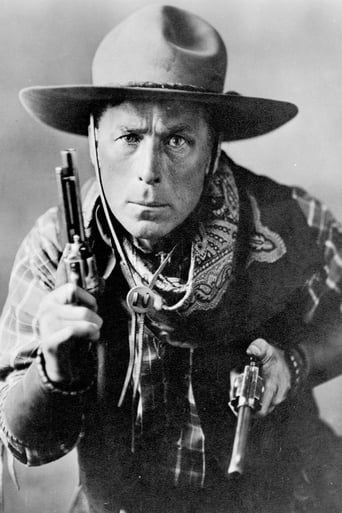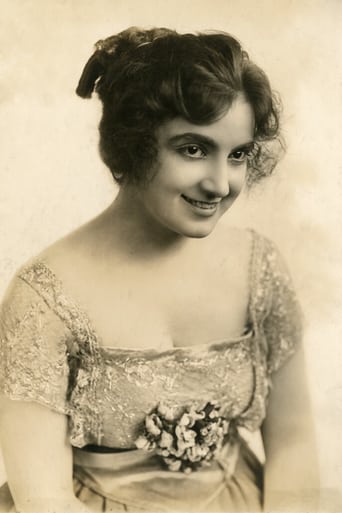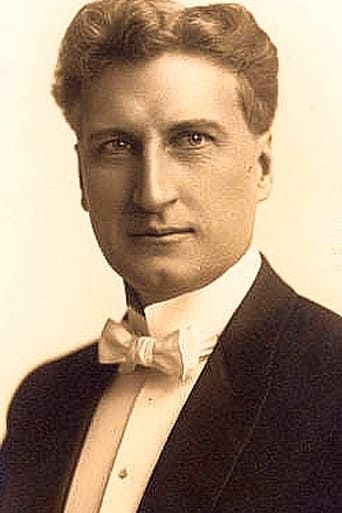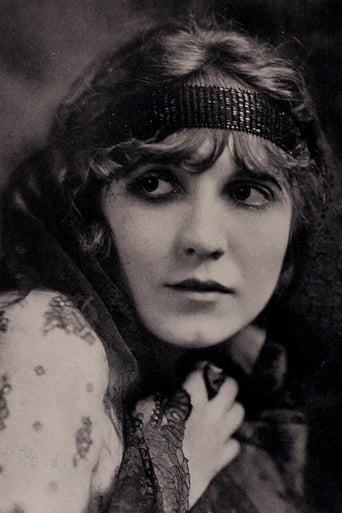ironhorse_iv
Completed during Progressive era of the mid 1910s, this 1916 silent era film was made for the film audiences of the time, in a strong attempt to teach them, the dangers of the church-less social anarchism. In their view, the dangers of foreign anarchists, were so-close to home that writer, C. Gardner Sullivan had to make a morality tale about the vulnerabilities of having a stateless society. After all, World War 1 (1914-1918) was caused by an anarchist assassin, and the Red Scare of 1919–20 were a few years ahead, was caused by the aftermath of 1919 United States anarchist bombings. So it makes sense for, director Charles Swickard, to make a film like this. Set in the fictional Wild West town of Hell's Hinges, a good minded, woman named Faith Henley (Clara Williams), tries hard to reform local tough outlaw, Blaze Tracy (William S. Hart) as a last ditch attempt to save her wild and debauched frontier town. However, her weak-willed minister brother, Rev. Bob Henley (Jack Standing) & a local saloon owner, Silk Miller (Alfred Hollingsworth), think otherwise, causing trouble and encourage the local rowdies to disrupt the attempts to evangelize the community. Without spoiling the movie, too much, this movie does seem a bit heavy-handed and preachy with its religious message. Added to the fact that the film is so grim and somber, that it made for a very hard watch for any modern viewer. Still, this moral retribution film, does have good things about the dark mood. Sepia, blue and red tainting are used to convey the atmosphere of different scenes. It really gave the movie, its unique look. That cinematography style is quite innovative for the time, when you think about it. Not only that, the film does make a good use of the close-up, long shot, panning, and continuity editing. One notably shot is the wide shot with extended panning to follow a stage coach travelling in the hills. Because of camera angles like that, this movie has some really entertaining shots. Most of it, comes with the intense action scenes. Made before the Hay Codes, ever existed. The violence throughout this film really made this film more gritty and rugged than other westerns at the time. They really did burn down most of the Wild West set, toward the end of the film. I also like how the main lead, is an interesting complex main character. Yes, maybe the character's transformation of Blaze Tracy came too abrupt in the beginning, Hart himself is quite effective in the role, despite that his character wasn't so reluctantly. Fascinated by the Old West, this role was made for William S. Hart. Not only did he acquired Billy the Kid's "six shooters" and was a friend of legendary lawmen Wyatt Earp and Bat Masterson. He live the Wild West lifestyle, for years, before entering the film industry in 1914 where, he played supporting roles. Hart was particularly interested in making realistic western films. His films are noted for their authentic costumes and props, as well as Hart's acting ability, honed on Shakespearean theater stages in the United States and England. Because of this, I'm glad to see that this movie still existed for this long, when a total of 70% of American silent feature films are believed to be completely lost. This is one of the earlier known realistic silent western out there. However, the film is quite unidimensional, when it comes to supporting characters. Since, most silent film actors emphasized body language and facial expression so that the audience could better understand what an actor was feeling and portraying on screen. Much silent film acting is apt to strike modern-day audiences as simplistic or campy. There is no bigger laughable performance than Jack Standing as Rev. Bob Henley. His acting as a drunk alcoholism, was a bit hilarious, than tragic. I really didn't feel much, about him. Another actor that seem a bit off is Clara Williams. Still, she's not awful, like other critics make her out to be. Yes, she doesn't have the good looks, but she does plays the motherly role, well. However, I don't really see her, as a love-interest or a morality saint. I find her quest to sudden transformation of Blaze from bad to good as unrealistic, because she barely did anything to force that on Blaze. Another thing, that was a bit jarring about the film is the racist stereotypes when it comes portraying Mexicans. Since, the original producers, fail to renew the film's copyright. It resulted, with the film, falling into public domain, meaning that virtually anyone could duplicate and sell a VHS/DVD copy of 'Hells Hinges'. Therefore, many of the versions of this film available on the market are either severely or badly edited. Since many of them, come from extremely poor quality, having been duped from second- or third-generation copies. Don't count on the audio and film footage to be good. Not only that, but it had a lot of scratches, and discoloring in the film footage. Overall: Despite that, Hell's Hinges is preserved in the archives of the National Film Registry as culturally significant. It's a must-watch for anybody who is a western fan and anybody who like silent era films. So check it out, if you want.
CJBx7
A weak-willed parson and his pious sister are sent to the town of Placer Center, known far and wide as Hell's Hinges for its immorality. There, Blaze Tracy a local gunfighter (William S Hart) is won over to belief by the sister's sincerity. A battle of wills ensues between the faithful churchgoers and the rowdy townspeople, with devastating results. Directed by Charles Swickard, William S. Hart and Clifford Smith.HELL'S HINGES is a more mature, serious brand of Western than many may expect. It examines religious hypocrisy in the form of the weak reverend, easily swayed into debauchery by the townspeople. It also features an anti-hero character in Tracy, who is not the typical affable good guy in white, but a violent, brooding man who is gradually won over to belief. The story is told in a compact, economical fashion, with not a wasted moment in its hour length. Each event in the story drives it to an unforgettable climax, full of action, where the tensions inherent in the story reach a cataclysmic boiling point. The acting is uniformly excellent and naturalistic. Standouts: William S Hart was one of the biggest stars of his time, and he shows why here. Hart has genuine star quality, acting with ease and restraint but also displaying charismatic power in his role. Clara Williams is completely believable in her turn as Faith, the reverent sister of the wayward parson. I was impressed with her work in the previous year's THE Italian, and she impresses again here, displaying conviction and tenderness in equal measure. Jack Standing is also fine as Bob Henley, a young man who was goaded into the ministry by his mother even though he doesn't have the right character for it. Another standout is Louise Glaum, one of the famous "vamps" of the period, who ably displays her seductive charms as a dance-hall girl who is urged to lead the minister to ruin. She conveys the character effectively without overacting. The cinematography here conveys the barren emptiness and imposing landscapes of the desert. The editing enables the film to move at a comfortable pace. Especially notable is the end, where the tensions between the two factions literally explode into nightmarish frenzy, as the church, then the whole town, is set ablaze. The images in the ending are exquisitely captured, showing the movies' ability to iconize people and images, as the hero and his love walk from the ruins of the town to start a new life. HELL'S HINGES is a memorable, powerful film from the early days of cinema, and merits viewing today. SCORE: 10/10
a-cinema-history
This is an unusual Western which uses the freedom which existed before the Hays Code to cast as a villain a faithless Reverend who gets drunk in the local saloon, spends the night with one of the saloon girls and takes part in the arson of his own church. Opposite him we find the Reverend's saintly sister, adequately called Faith, and the big gun Blaze who was determined to get rid of the parson but falls in love with Faith and because of that start believing in God, protects the justs and destroys the villains. Apart from the parsons who is torn between good and evil, the characters are quite unidimensional and racist stereotypes are present, in this case concerning Mexicans. The sudden transformation of Blaze from bad to good is a bit too sudden to be credible.The cinematography is quite innovative for the time with the use notably of a very wide shot with extended panning to follow a stage coach traveling in the hills. Editing is dynamic with efficient use of cross-cutting. Most of the action is filmed outdoor with the reconstitution of a Wild West settlement which is entirely burned down at the end. Sepia, blue and red tainting are used to convey the atmosphere of different scenes. Humour is also present e.g. when we are shown how the parsons imagines the West. The moralizing ending where the bad are punished is a bit too conventional.a-cinema-history.blogspot.com/2013/11/





